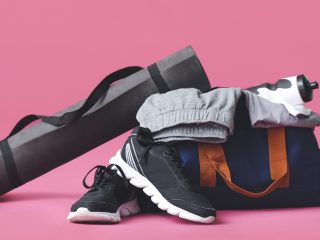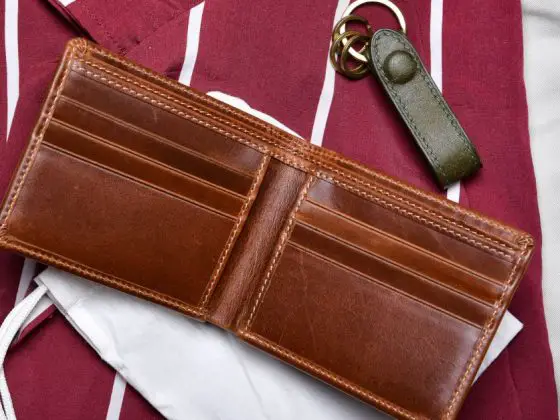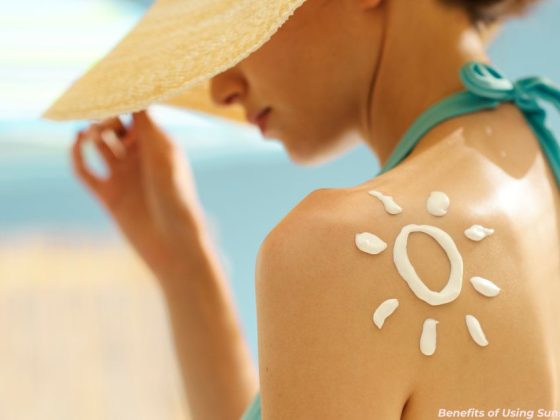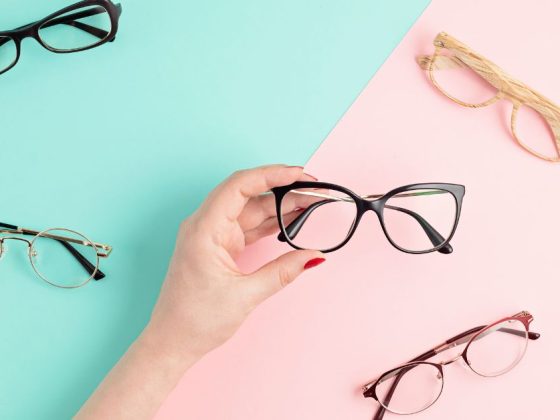 Proper care of sportswear is essential for maintaining its condition and prolonging its lifespan. It helps your clothes stay functional and perform their best whenever you put them on. When you try to maintain your sportswear, you’re not just preserving its quality. You’re also keeping it looking great. This way, your gear will continue to support you through every workout and still look fresh and ready for action. Whether you’re hitting the gym, running, or working out on weekends, following our guide to sportswear care will help keep your gear functional and looking great.
Proper care of sportswear is essential for maintaining its condition and prolonging its lifespan. It helps your clothes stay functional and perform their best whenever you put them on. When you try to maintain your sportswear, you’re not just preserving its quality. You’re also keeping it looking great. This way, your gear will continue to support you through every workout and still look fresh and ready for action. Whether you’re hitting the gym, running, or working out on weekends, following our guide to sportswear care will help keep your gear functional and looking great.
What is Sportswear?
Sportswear has become a significant player in the fashion industry, reflecting our modern lifestyle where fitness and health take center stage. These days, exercise isn’t just about staying fit; it’s also about making a statement with what we wear. As people increasingly prioritize their well-being, sportswear has evolved from basic gym clothes to an essential part of everyday fashion.
Today’s trends showcase a shift towards comfort and functionality, with baggy sweaters and jogging bottoms leading the charge. This style isn’t just about looking good while working out; it’s about embracing a relaxed, active lifestyle. As health and wellness become more integrated into daily routines, our clothing choices blend comfort with a sporty flair.
What Fabric is Best for Sportswear?
Cotton
Cotton wasn’t considered ideal for activewear in the past because it needed to absorb sweat better. But recently, cotton sportswear has been returning thanks to its superior odor management. Cotton is breathable and doesn’t trap unpleasant smells, which makes it a more comfortable choice for some. It still needs to catch up when quickly wicking away sweat compared to more modern, high-tech fabrics designed for intense activity.
Calico
Calico is a type of cotton left in its raw, unprocessed state, meaning it’s made using the same basic cotton production steps but halted before it’s fully refined. This makes calico highly absorbent, which is great for activewear. Opting for calico is eco-friendly because it’s a cheaper green alternative due to its unfinished, undyed nature. However, the downside is that you’ll need to add color to the calico later on, which can affect its overall look.
Spandex
Spandex is a top choice for sports and gym wear because of its incredible stretchiness, which makes clothes feel agile and comfortable during intense workouts. This material can stretch up to 100 times its original size, making it a favorite for sportswear brands everywhere. Spandex also excels at wicking away sweat, breathing well, and drying quickly, making it a practical and affordable option. However, it can be tricky to embroider on, as it needs to hold stitch designs better.
Synthetic
Synthetic sportswear was developed to upgrade from the old rubber and plastic gear that often left athletes overheated. Artificial materials are used for clothing and sports accessories like knee and elbow bands. They’re great because they’re breathable and quickly wick away sweat, helping you stay cool during workouts. However, the downside is that the production process involves chemical synthesis, which generates non-renewable byproducts and could be better for the environment.
Microfiber
As its name suggests, microfiber is made from outstanding threads up to 100 times thinner than human hair. This super-fine material is crafted from a blend of polyester and polyamide, giving it impressive absorbency and a soft, non-abrasive feel. Because of its complex production process, microfiber can be pricier, so you’ll often find it in high-quality gym wear, towels, and tracksuits. Despite the cost, its performance and comfort make it a popular choice for those looking for top-notch athletic gear.
Nylon
Initially popularized for making women’s stockings, Nylon has become a staple in sportswear. It’s now widely used in windbreakers, tracksuits, and gym wear. Nylon is recognized for its stretchiness and quick-drying features. It’s also mildew-resistant and highly breathable. It lets cool air reach your skin and efficiently wicks sweat to the fabric’s surface, where it evaporates, keeping you comfortable and well-regulated in any workout.
Pro Tips: Ultimate Guide to Sportswear Care
Sportswear has become a vital component of an active lifestyle, whether regularly hitting the gym or squeezing in a workout now and then. This practice extends the life of your clothes and keeps them performing at their best and looking sharp. By giving your sportswear the attention it deserves, like washing and storing it correctly, you ensure it remains functional and stylish for every workout session. After all, well-maintained gear helps you feel your best in performance and appearance and keeps you motivated to stay active.
Getting to Know Your Fabrics
Sportswear is made from various materials, each with its own care needs, so knowing what your gear is made of can make a big difference in how it lasts. You’ll often find fabrics like moisture-wicking synthetics, breathable nylons, and cozy cotton in your wardrobe. Checking the care label for washing instructions can keep your sportswear. Mixing different fabrics in the wash can damage and reduce their effectiveness, so sorting your laundry by material can help maintain its performance and longevity.
Effective Washing Methods
Washing sportswear is all about finding the right balance between getting rid of sweat and grime and keeping the fabric in good shape. You want to ensure your clothes come out clean without losing performance features or damage. You’ll keep your gear looking and feeling great using gentle washing methods, ready for your next workout.
Here’s what you should know:
- Instead of using average temperature, opt for cold water to prevent shrinking and color fading.
- Choose the gentle cycle to minimize agitation.
- Use a mild, sports-specific detergent or a gentle, fragrance-free option to avoid residue buildup.
- Avoid fabric softeners, which can clog moisture-wicking properties.
Drying Tips
Drying your sportswear is just as crucial as washing it. High heat can harm the fabric, weaken the elastic, and reduce moisture-wicking performance. To keep your gear in top shape, air-dry your clothes or use a low-heat setting on your dryer. It will preserve the fabric’s integrity and ensure your sportswear stays functional and comfortable for every workout.
- Air dry your sportswear on your drying rack or any clean surface.
- Choose the lowest heat setting to prevent damage if you need a dryer.
- Avoid drying sportswear in direct sunlight, as it can fade colors and weaken the fibers.
Storage Practices
Proper storage extends the life of your sportswear. Keep your gear in great shape, cool and dry, avoid overcrowding, and use hangers or shelves that won’t stretch the fabric. These steps help maintain the quality and functionality of your sportswear. Your sportswear for the long haul.
- Always ensure your sportswear is clean before storing it to prevent stains from setting in.
- Fold your sportswear to avoid stretching the elastic materials.
- Store sportswear in a well-ventilated area to prevent odors and moisture buildup.
Repair and Maintenance
Regularly inspect your sportswear for any signs of wear and tear. Catching issues early can help you fix them before they get worse. If you notice any problems, like fraying seams or small holes, take care of them immediately. This simple routine will keep your gear in good shape and ensure it performs well every time you use it.
- Reinforce loose seams to prevent them from unraveling further.
- Use a fabric shaver to remove pilling, as it can impact both the appearance and performance of your clothing.
- Use a graphite stick to lubricate the zippers and ensure they move smoothly.
Different Types of Sportswear
Sportswear is crucial for athletes and fitness enthusiasts, offering the comfort, flexibility, and durability needed for physical activities. Whether running, lifting weights, or practicing yoga, the right sportswear can make all the difference in how you feel and perform. A wide range of sportswear is signed to meet the needs of various sports and exercises, each tailored to support different movements and activities.
Sportswear is designed with specific functions in mind, such as moisture-wicking fabrics to keep you dry during workouts and supportive compression gear to aid in recovery. In the following sections, I’ll dive into some of the most common types of sportswear, helping you understand which options might be best suited for your fitness routine and sporting needs.
Running Shorts
Running shorts are designed with lightweight fabrics that keep you cool and comfortable while you’re on the move. They feature a shorter inseam to help prevent chafing on your inner thighs and a built-in liner for added support during those high-impact runs or jogs. This combination ensures you have the freedom to move quickly and stay comfortable, no matter how intense your workout gets.
Compression Pants
Compression pants are snug-fitting and apply gentle pressure to your muscles. This procedure can help to reduce fatigue and soreness during workouts and recovery. They’re versatile enough to be worn on their own or layered under other sportswear, like athletic shorts, for added support. It makes them excellent for enhancing performance and comfort during your exercise routine.
Tank Tops
Tank tops are sleeveless shirts that allow you to move your arms without restriction. They are ideal for activities where a full range of motion is vital (e.g., yoga and weightlifting). Their design ensures you stay relaxed and comfortable while working out, allowing you to focus on your exercise without any limitations.
Sports Bras
Sports bras provide extra support compared to regular bras by reducing breast movement during exercise. They help minimize discomfort and protect delicate breast tissues from the constant bouncing and jarring during physical activity. A well-fitted sports bra lets you focus on your workout without discomfort or potential damage.
Sweatpants
Sweatpants are the ultimate comfort and flexibility, perfect for low-intensity workouts like warm-ups or cool-downs, especially in colder weather. Their loose fit allows you to move while keeping you warm, so you can stay cozy and unrestricted as you ease into or out of your exercise routine.
Hoodies/Jackets
These items keep you warm in cold weather before, during, and after outdoor training sessions while adding style to your workout gear. Various designs, colors, and styles offer both practicality and a chance to make a fashion statement while staying comfortable and cozy.
Leggings/Tights
Leggings and tights have become a go-to favorite for many because of their versatility, extending well beyond just workout gear. People now pair them with hoodies or jackets for a trendy, casual look perfect for lounging and running errands. Their comfort and style make them a staple in everyday fashion, blending practicality with flair.
Proper care of sportswear extends its lifespan and maintains performance. Follow best washing, drying, and storing practices to keep your gear in top condition. Sportswear has become an essential fashion component, combining comfort, style, and functionality. Understanding care ensures your gear supports you through every workout, whether running shorts, compression pants, or leggings.
















